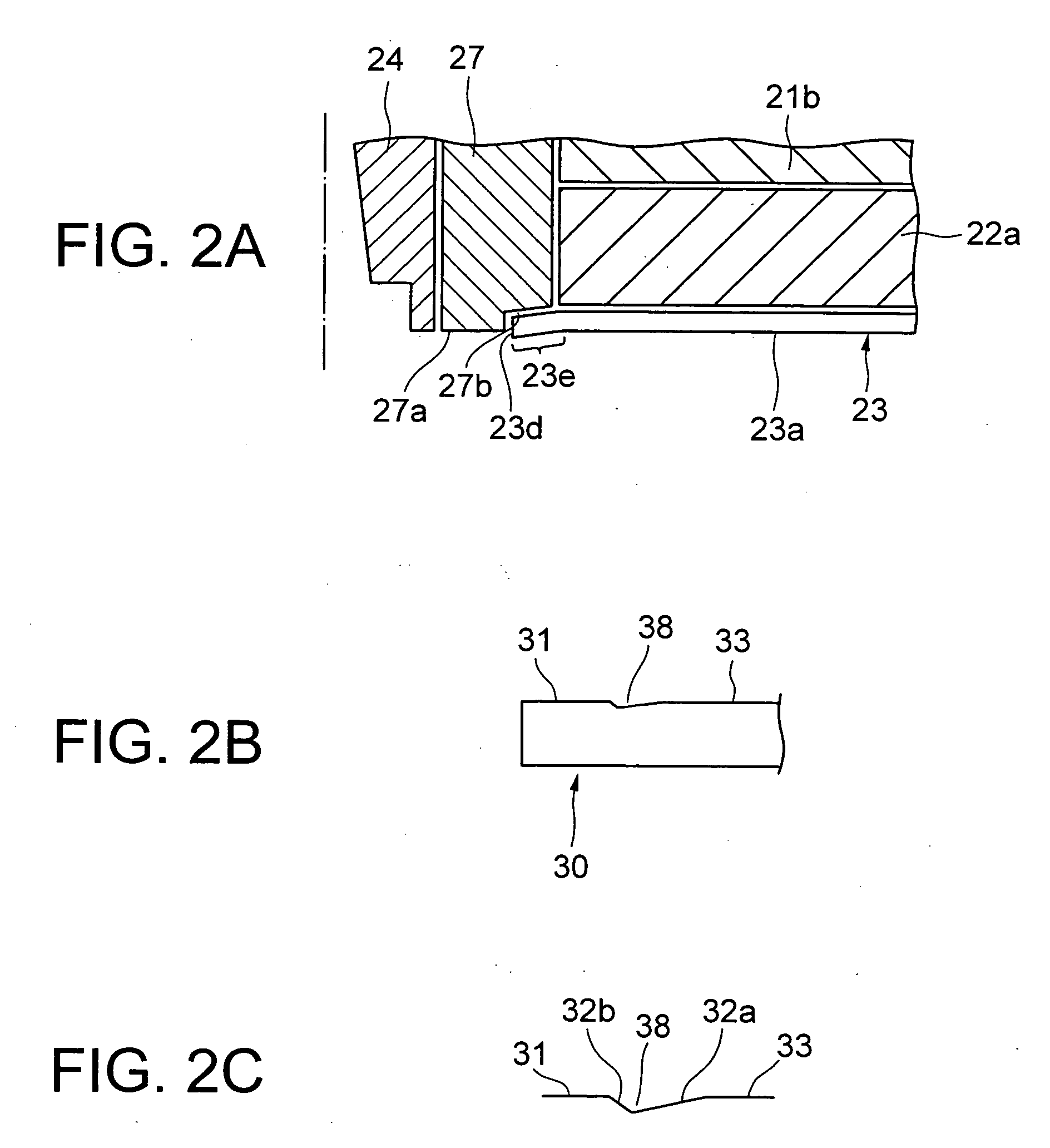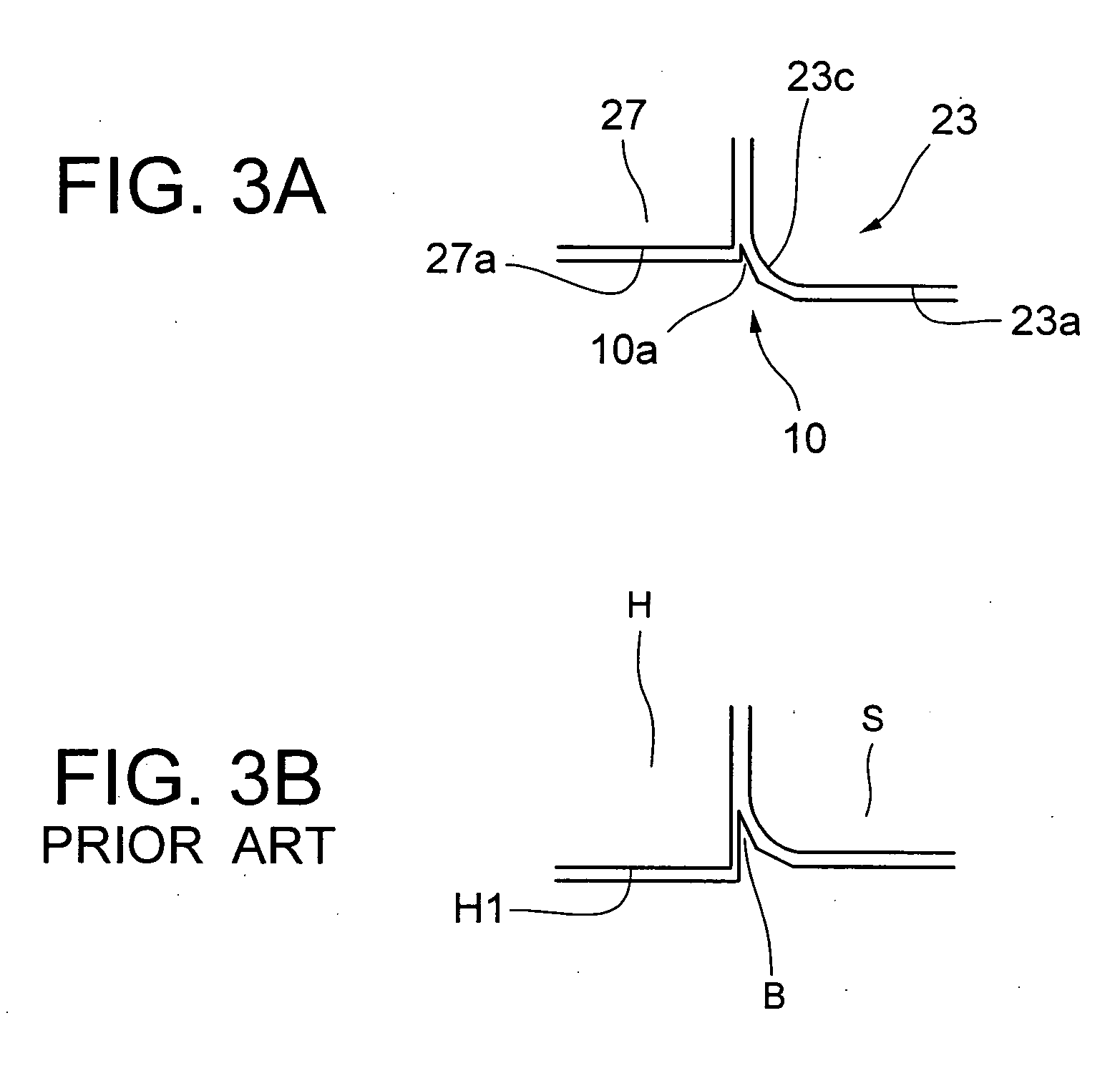Molding mold, substrate for optical disc, and optical disc
a technology for optical discs and molds, which is applied in the field of molds, substrates for optical discs, and optical discs, can solve the problems of affecting so as to improve the accuracy of optical disc thickness, and reduce the occurrence of burrs
- Summary
- Abstract
- Description
- Claims
- Application Information
AI Technical Summary
Benefits of technology
Problems solved by technology
Method used
Image
Examples
Embodiment Construction
[0058] A best mode for carrying out the present invention will hereinafter be described with reference to the drawings. FIG. 1 is a sectional view of a principal portion of a molding mold assembly according to the present embodiment. This molding mold assembly serves to mold a plastic mold substrate for optical discs such as a CD, a DVD, a Blu-ray disc and so on.
[0059] The molding mold assembly shown in FIG. 1 includes a fixed mold 21 and a movable mold 22. The fixed mold 21 has a fixed mirror surface portion 21a, a fixed mold plate 21b, a holder member 27 disposed in the vicinity of the center, and a sprue bush 24 disposed at the center on the side of an inside diameter of the holder member 27. Further, the movable mold 22 has a movable mirror surface portion 22a, a movable mold plate 22b and an ejection member 28 driven upwards as viewed in FIG. 1 in order to extract a mold product when in mold releasing after being molded.
[0060] A stamper 23 is composed of nickel, etc., in a pl...
PUM
| Property | Measurement | Unit |
|---|---|---|
| depth | aaaaa | aaaaa |
| height | aaaaa | aaaaa |
| diameter | aaaaa | aaaaa |
Abstract
Description
Claims
Application Information
 Login to View More
Login to View More - R&D
- Intellectual Property
- Life Sciences
- Materials
- Tech Scout
- Unparalleled Data Quality
- Higher Quality Content
- 60% Fewer Hallucinations
Browse by: Latest US Patents, China's latest patents, Technical Efficacy Thesaurus, Application Domain, Technology Topic, Popular Technical Reports.
© 2025 PatSnap. All rights reserved.Legal|Privacy policy|Modern Slavery Act Transparency Statement|Sitemap|About US| Contact US: help@patsnap.com



